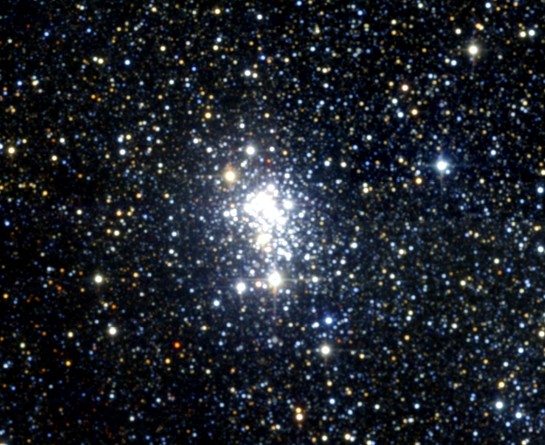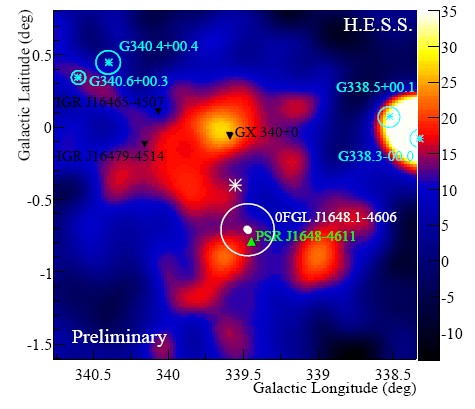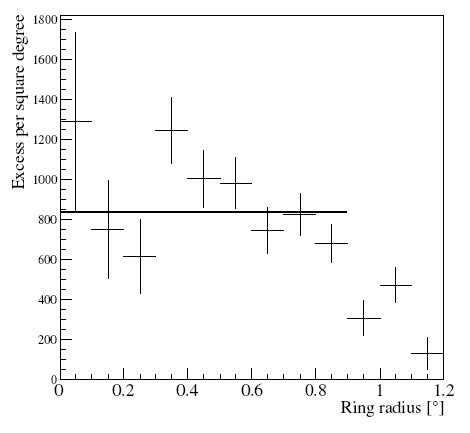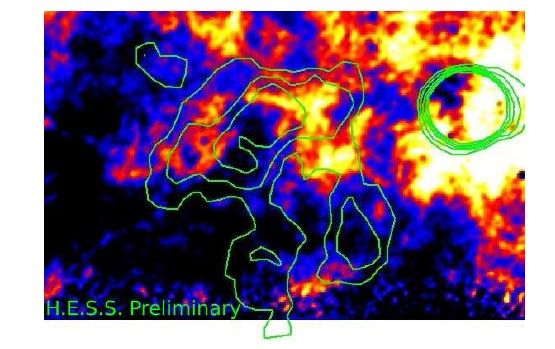The Westerlund 1 Star Cluster
June 2009

Westerlund 1 (Wd1) is the most massive compact young star cluster in our Galaxy, with a total mass of around 60000 solar masses, at a distance of 4 to 5 kpc from Earth. The cluster contains a large number of rare, evolved high-mass stars including 6 yellow hypergiants, 3 red supergiants, 24 Wolf-Rayet stars, as well as more than 80 blue supergiants (see e.g. Muno et al. 2006 for further references). With an estimated age of ~5 Myrs, the most massive stars in Wd1 will have evolved into supernovae, accelerating cosmic rays in their supernova remnant shocks. Winds of Wolf-Rayet stars and their termination shocks may also contribute to particle acceleration, dissipating an energy around 10^39 ergs/s. Massive young star clusters are therefore plausible sources of very high energy gamma rays, with the cluster Westerlund 2 as a first example (SOM 12/06).
The Westerlund 1 region was observed with H.E.S.S. in 2004-2008 during the Galactic Plane Survey and by dedicated pointed observations, resulting in a total of 34 h of high-quality data. These data reveal a spatially very extended emission region of very high energy gamma rays, detected as a source with high statistical significance, centered roughly on Westerlund 1 (Fig. 1). In total, about 2300 gamma rays are detected. The extension of the emission exceeds 2 degrees in diameter (Fig. 2), making it one of the largest structures observed in VHE gamma rays so far. Identifying the exact origin of the gamma-ray emission is difficult. For example, a pulsar wind nebula created by the pulsar PSR J1648-4611 might contribute, but is unlikely to account for the full extended emission. Radio data (Fig. 3) show evidence that Westerlund 1 is embedded in a (partial) bubble in the ambient medium, and the very high energy gamma ray emission overlaps with the edge of the bubble, where particles accelerated in wind termination shocks and supernova shocks might find a suitable target to interact and produce gamma rays.
Reference: S. Ohm et al., "H.E.S.S. observations of massive stellar clusters", Proc. of the Conf. on High Energy Phenomena in Massive Stars, Jaen, February 2009


